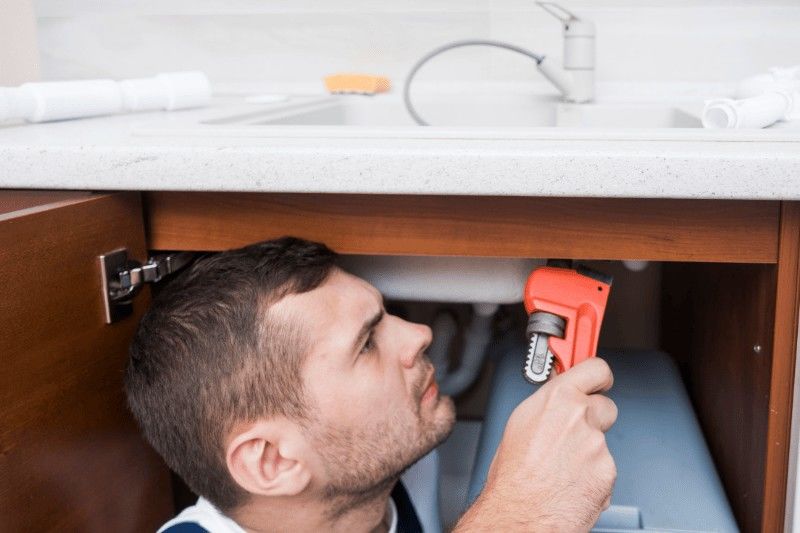Top 10 DIY plumbing mistakes to avoid
Many people try to fix plumbing problems on their own. Some jobs are simple, like changing a washer. But others can go wrong very quickly.
Sponsored Story

Many people try to fix plumbing problems on their own. Some jobs are simple, like changing a washer. But others can go wrong very quickly. A small mistake may not seem like a big deal at first. But water damage can happen fast and cost a lot to fix. That’s why it’s important to know what not to do. Here are the ten most common plumbing mistakes people make at home.
1. Forgetting to Turn Off the Water
This is the most common error. People start work without turning off the water supply. If you open a pipe or tap while water is still on, it can flood your kitchen or bathroom. Before you do anything, find your stop valve. Turn it off. Then open a tap to release any leftover water.
2. Using the Wrong Tool
Using tools not meant for plumbing can cause damage. A regular spanner can round off the edges of pipe fittings. Plumbing tools like pipe wrenches and basin spanners grip better. They protect fittings and make your work easier. If you don’t have the right tool, ask for help or borrow one.
3. Over-Tightening Connections
It’s easy to think tighter is better. But turning too hard can crack pipes or fittings. You only need to tighten until the joint feels firm. If you go further, you could cause a leak without knowing it.
4. Wrapping Tape the Wrong Way
Plumber’s tape helps seal threaded joints. But many people wrap it backwards. Always wrap in the same direction that the fitting turns. Two or three layers is enough. If you use too much or wrap the wrong way, the tape bunches up and the seal may fail.
5. Ignoring Small Leaks
“Small leaks might not seem like a big deal, but they can waste water, increase your bills, and even cause structural damage over time,” says Cyber Plumbers. In fact, flexible hoses are one of the top causes of water damage. Allianz has reported that burst hoses and other leaks cost homes hundreds of millions in repairs. Check hoses under sinks and in the laundry. If they look worn, replace them before they fail.
6. Using Drain Cleaner Too Often
Chemical drain cleaners are sold as a quick fix. But they can damage older pipes. These cleaners are strong. They break down clogs, but they also weaken seals and corrode joints. If used too often, they can cause more harm than good. Try a plunger or a drain snake first. If the blockage stays, call a plumber.
7. Flushing the Wrong Things
Toilets are not built to handle anything but toilet paper and human waste. Flushing wipes, tissues, cotton buds, or sanitary items can block your pipes. These items do not break down in water and can get stuck in bends or traps. If it’s not toilet paper, it should go in the bin.
8. Taking On Work That Needs a Licence
Some plumbing jobs are not safe to do yourself. Gas plumbing, hot water systems, and sewer lines all need trained professionals. Working on these can be dangerous. It can also void your insurance. Stick to small jobs like fixing taps. Call a licensed plumber for anything else.
9. Using the Wrong Pipes or Connectors
Pipes and fittings come in many sizes and materials. Not all of them fit together. If you connect two different metals, like copper and steel, they can corrode over time. This may cause leaks or blockages later. Always check you’re using the right size and type for your system. If you’re unsure, ask your local plumbing supplier.
10. Leaving the Job Half Done
Sometimes a job is harder than it looks. If it takes too long or something won’t fit, people give up halfway. An unfinished repair can still leak. Loose parts can shift. That’s how small problems become bigger ones. If you’re stuck, stop. Call a plumber to help you finish the work safely.
How Often DIY Jobs Go Wrong
A survey by hipages found that one in four DIY jobs leads to problems. Plumbing is high on that list. Common issues include wrong parts, poor sealing, and leaks caused by over-tightening. Some repairs that start as quick fixes turn into costly jobs.
- Easy Tips to Stay Safe
- Turn off water at the mains before you begin
- Use the right tools for the job
- Tighten fittings only until secure
- Wrap thread tape in the correct direction
- Check hoses and connections each year
- Don’t flush anything but toilet paper
- Avoid strong chemicals in old pipes
- Only take on jobs you’re confident with
- Match pipe sizes and materials
- Never walk away from a job half finished
When You Should Call a Plumber
Some signs mean it’s time to get help:
- Dripping water behind a wall or under the floor
- Bad smells near pipes or drains
- Pipes that feel hot or make loud noises
- Water stains that keep growing
- Toilets that don’t flush properly
- A blocked drain that won’t clear
- Jobs involving gas or hot water
Plumbers have the right tools and training. They also know the local building codes. It’s safer to pay for a proper repair than fix damage later.
Final Thoughts
DIY plumbing can be simple, but it’s not always easy. Many problems begin with a small mistake. Think before you start. Plan the job. Use the right tools. Know when to call someone in. It’s better to ask for help than risk making the problem worse. Being careful now can save you a lot of stress later.




